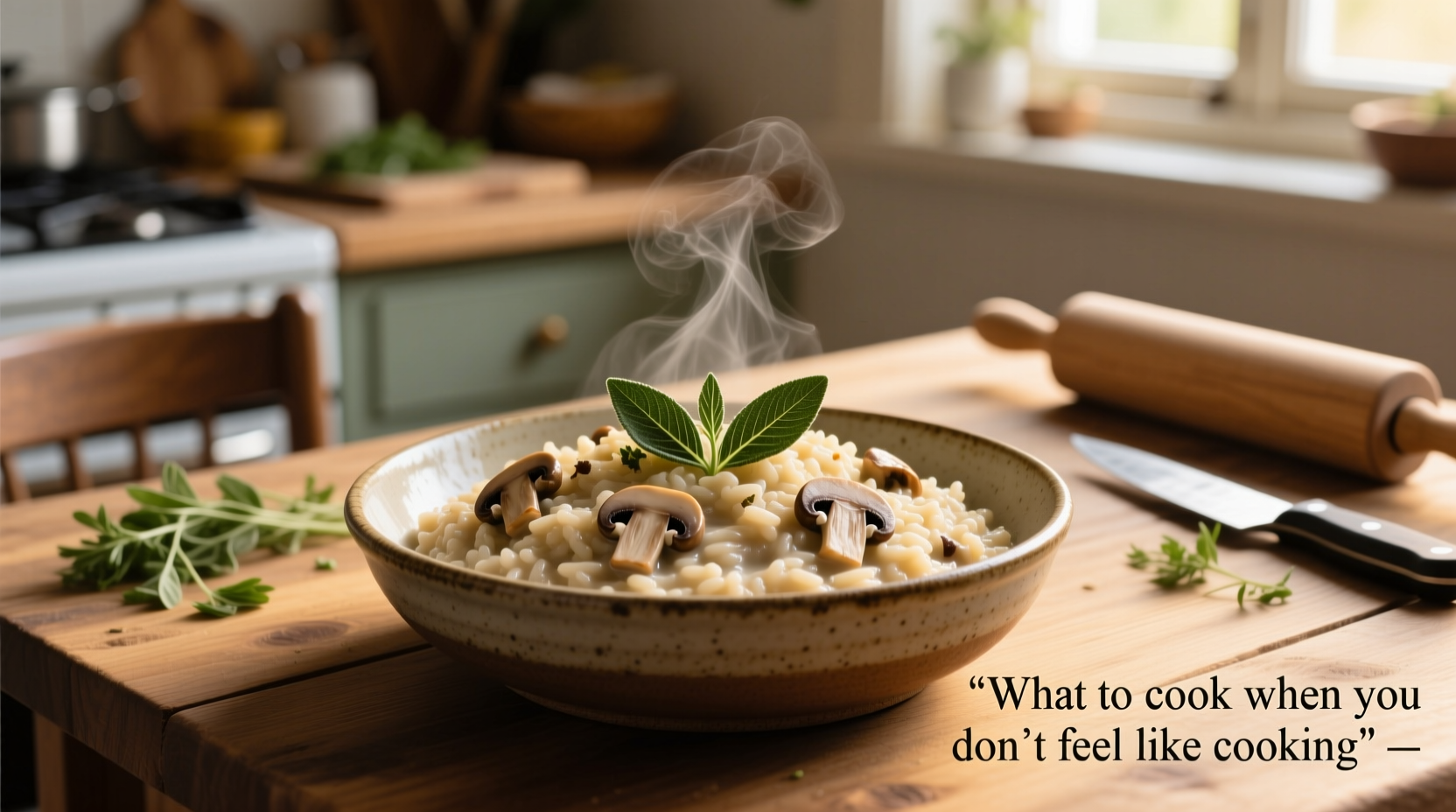Let's face it: some days, the thought of cooking feels overwhelming. Whether you're exhausted after work, dealing with low energy, or simply mentally drained, knowing what to cook when you don't feel like cooking can prevent you from ordering takeout or going hungry. The good news? With the right approach, you can create satisfying meals in under 15 minutes using basic ingredients you likely already have.
Assess Your Cooking Capacity First
Before deciding what to cook when you don't feel like cooking, quickly evaluate your situation:
- Energy level: Can you stand for 5 minutes? Or should you stick to zero-cook options?
- Available ingredients: Check your pantry, fridge, and freezer for staples
- Time constraints: How many minutes can you realistically commit?
This quick assessment prevents decision fatigue and helps you choose the most realistic option for your current state.
No-Effort Solutions (5 Minutes or Less)
When cooking feels impossible, these zero-prep meals require no heat and minimal physical effort:
- Avocado everything bagel: Slice avocado, spread on toasted bagel, sprinkle with everything seasoning
- Cottage cheese bowl: Top cottage cheese with cherry tomatoes, cucumber slices, and everything bagel seasoning
- Instant hummus wrap: Spread hummus on tortilla, add pre-sliced veggies, roll and eat
- Yogurt power bowl: Greek yogurt with frozen berries (thawed in microwave for 30 seconds) and granola
According to USDA food safety guidelines, properly stored leftovers remain safe to eat for 3-4 days, making them perfect for when you don't feel like cooking but have leftovers. Simply reheat in the microwave with a splash of water to maintain moisture.
Minimal-Cook Options (10 Minutes Max)
When you can manage a bit more effort, these one-pan wonders deliver maximum satisfaction with minimum work:
| Recipe | Active Time | Key Ingredients | Special Equipment |
|---|---|---|---|
| 5-minute microwave eggs | 3 minutes | Eggs, milk, salt | Microwave-safe mug |
| 10-minute tuna melt | 8 minutes | Canned tuna, bread, cheese | Toaster or skillet |
| Instant ramen upgrade | 5 minutes | Ramen, egg, frozen veggies | One pot |
| Canned bean quesadilla | 7 minutes | Canned beans, tortillas, cheese | Skillet |
Research from the American Psychological Association shows that decision fatigue significantly impacts our ability to prepare meals when tired. The solution? Create 'emergency meal protocols' - predetermined recipes requiring identical steps regardless of ingredients. For example: 'Microwave protein + add frozen veggies + top with sauce' works for chicken, fish, tofu, or eggs.
Pantry Rescue Meals (3 Ingredients or Less)
When your fridge is nearly empty, these minimal-ingredient meals save the day:
- 2-ingredient peanut noodles: Cook instant noodles, drain, mix with peanut butter and hot water
- 3-bean chili: Combine canned kidney beans, black beans, and diced tomatoes with spices
- Egg-in-a-hole toast: Cut hole in bread, cook in skillet, crack egg into center
- Canned salmon patties: Mix canned salmon with breadcrumbs and egg, pan-fry for 3 minutes per side
When Cooking Feels Impossible: Psychological Hacks
When your brain rebels against cooking, try these evidence-based approaches:
- The 2-minute rule: Commit to just 2 minutes of cooking - you'll often continue once started
- Prep while coffee brews: Use that automatic 5 minutes for chopping or measuring
- Set a timer: Work in 5-minute increments with breaks in between
- Listen to one song: Complete your meal before the song ends
These techniques address what psychologists call 'activation energy' - the mental barrier to starting tasks. Lowering this barrier makes what to cook when you don't feel like cooking less daunting.
What Not to Do When You're Tired
Avoid these common pitfalls when cooking with low energy:
- Don't attempt recipes requiring multiple pots/pans
- Avoid ingredients needing extensive prep (like chopping onions)
- Don't try new complex techniques
- Skip recipes requiring precise timing
According to food safety experts at FoodSafety.gov, the 'danger zone' for food is between 40°F and 140°F. When cooking while tired, always use a food thermometer to ensure safety, especially with proteins. It's worth the extra 10 seconds to prevent foodborne illness when your judgment might be compromised.
Your Emergency Cooking Kit
Keep these staples on hand for when you don't feel like cooking but need to eat:
- Proteins: Canned tuna, salmon, beans, lentils, eggs
- Carbs: Instant rice, ramen, tortillas, bread
- Veggies: Frozen spinach, peas, corn
- Sauces: Soy sauce, hot sauce, olive oil, vinegar
Having these basics means you're always 5 minutes away from a decent meal, even on your most exhausted days. The key is keeping your 'emergency cooking kit' visible and organized - store these items together in one pantry section for quick access when you're not thinking clearly.











 浙公网安备
33010002000092号
浙公网安备
33010002000092号 浙B2-20120091-4
浙B2-20120091-4